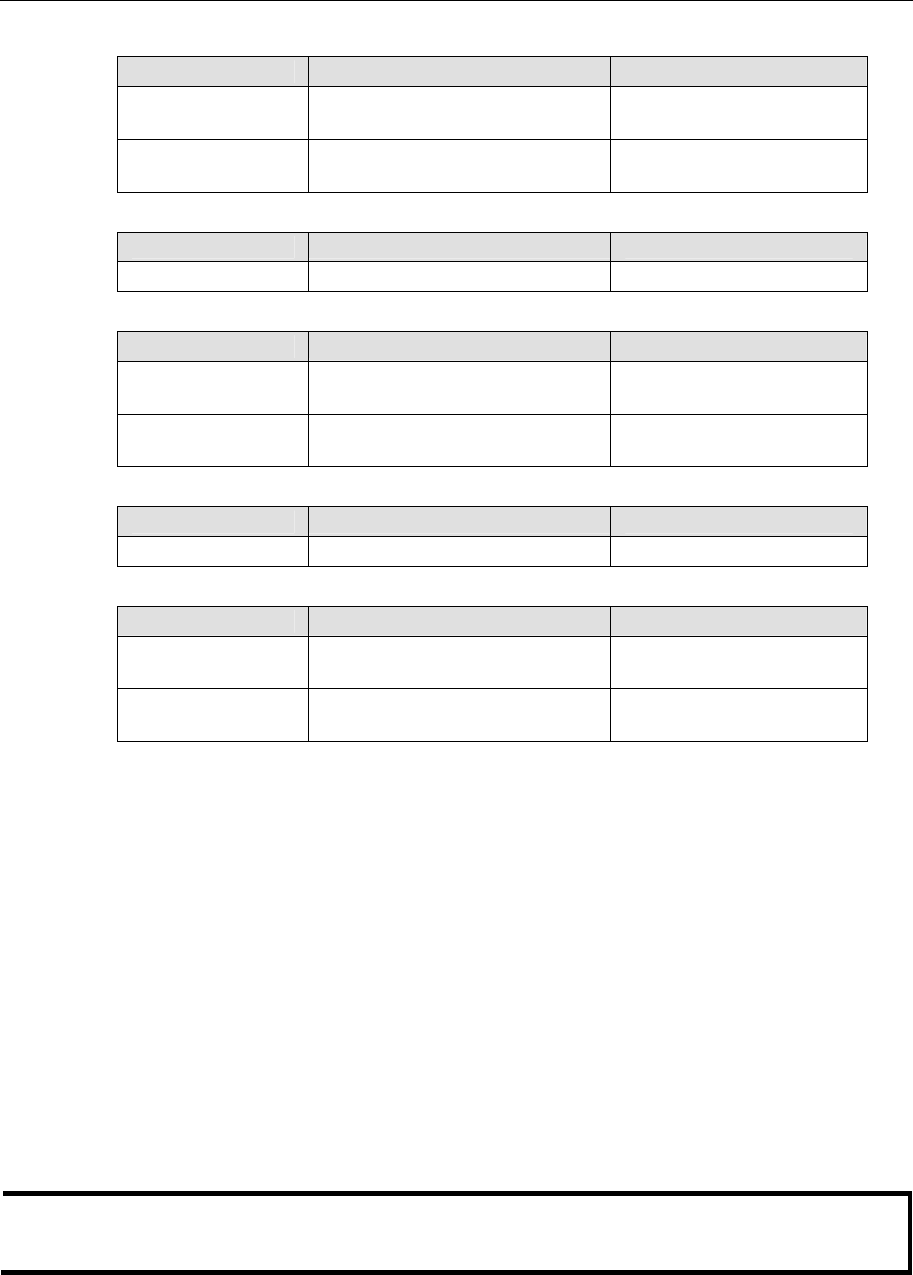
EDS-726 Series User’s Manual Featured Functions
3-24
Redundancy Protocol
Setting Description Factory Default
Turbo Ring
Select this item to change to the
Turbo Ring configuration page.
None
RSTP (IEEE
802.1W/1D)
Select this item to change to the
RSTP configuration page.
None
Set as Master
Setting Description Factory Default
Enable/Disable Select this EDS-726 as Master None
Redundant Ports
Setting Description Factory Default
1st Port
Select any port of EDS-726 to be
one of the redundant ports.
Port 7 if enabled for
Turbo Ring
2nd Port
Select any port of EDS-726 to be
one of the redundant ports.
Port 8 if enabled for
Turbo Ring
Enable Ring Coupling
Setting Description Factory Default
Enable/Disable Select this EDS-726 as Coupler None
Coupling Ports
Setting Description Factory Default
Coupling Port
Select any port of EDS-726 to be
the coupling port
Port 5 if enabled for
Ring Coupling
Coupling Control Port
Select any port of EDS-726 to be
the coupling control port
Port 6 if enabled for
Ring Coupling
The STP/RSTP Concept
Spanning Tree Protocol (STP) was designed to help reduce link failures in a network, and provide
protection from loops. Networks that have a complicated architecture are prone to broadcast
storms caused by unintended loops in the network. MOXA EDS-726’s STP feature is disabled by
default. To be completely effective, you must enable RSTP/STP on every EDS-726 connected to
your network.
Rapid Spanning Tree Protocol (RSTP) implements the Spanning Tree Algorithm and Protocol
defined by IEEE Std 802.1w-2001. RSTP provides the following benefits:
y The topology of a bridged network will be determined much more quickly compared to STP.
y RSTP is backward compatible with STP, making it relatively easy to deploy. For example:
¾ Defaults to sending 802.1D style BPDUs if packets with this format are received.
¾ STP (802.1D) and RSTP (802.1w) can operate on different ports of the same EDS-726.
This feature is particularly helpful when EDS-726 ports connect to older equipment, such
as legacy switches.
You get essentially the same functionality with RSTP and STP. To see how the two systems differ,
see the Differences between RSTP and STP section in this chapter.
NOTE
The STP protocol is part of the IEEE Std 802.1D, 1998 Edition bridge specification. The
explanation given below uses bridge instead of switch.


















